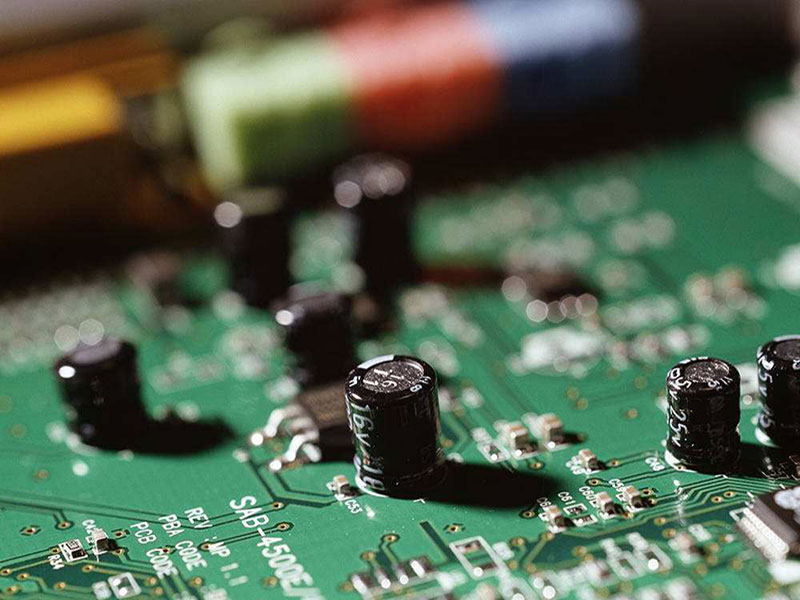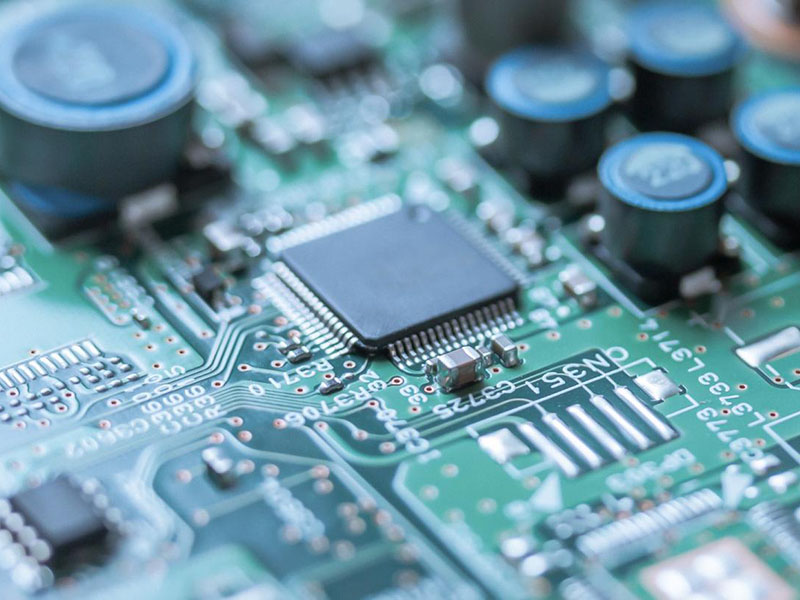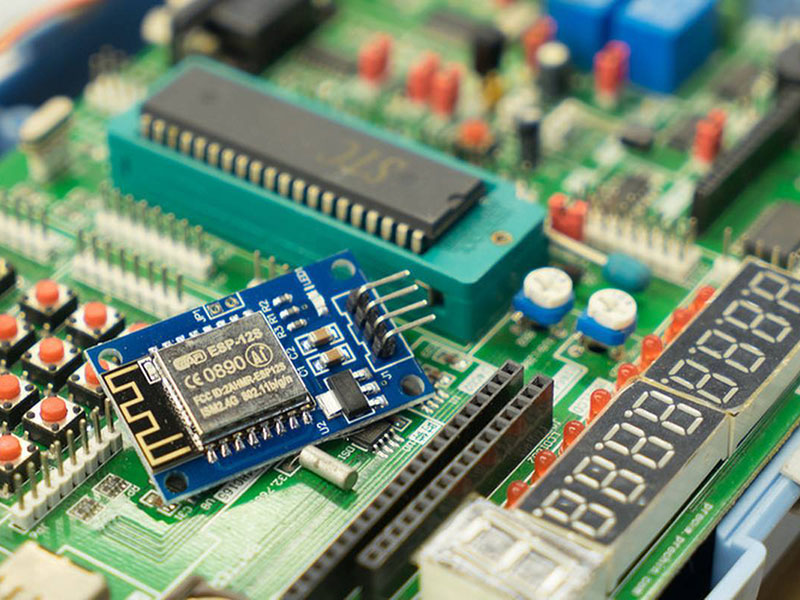By the time you’ve reached the assembly phase, you’ve already dedicated a lot of time and resources to your printed circuit board project. You want to ensure that this crucial step does your product justice. If you’re outsourcing your assembly, you want to make sure you choose the right partner. The vast array of available options and the importance of this decision can make choosing a manufacturer to work with a challenge. How do you go about selecting a PCB assembly manufacturer and determining which one will best suit your project’s needs?
How to do PCB Assembly?
To work the right PCB assembly manufacturer,such as top PCB assembly manufacturer Eashub, you need to know what goes into PCB assembly — especially as it applies to your specific project. What is PCB assembly? It’s the step in the manufacturing process in which you populate a blank board with the electronic components needed to make it into a functional printed circuit board. It’s these components that make a board into the circuit that enables an electronic product to function. PCB assembly typically takes place via one of two processes:
Surface-mount technology
Through-hole manufacturing
How to Choose a PCB Assembly manufacturer
Surface-mount technology is used to assemble a majority of PCBs. With this technique, you can create products that are one-third the size and one-tenth the weight of boards made with through-hole manufacturing. It also allows for higher connection densities and is typically faster and more cost-effective than through-hole manufacturing. In this method, the manufacturer mounts components directly on the surface of the board.
Through-hole, or thru-hole, manufacturing is an older PCB assembly method that involves placing units in holes drilled in the board and soldering the leads to pads on the opposite side of it. The main advantage of through-hole assembly is the stronger bond between the components and the circuit board, which makes the product more durable. This method is more time-consuming and expensive than surface-mount technology but is necessary for products that will undergo substantial mechanical stress, environmental stress or high voltage. It’s also ideal for larger components such as connectors and transformers.
If your project fits any of these criteria, through-hole manufacturing may be the best choice. Otherwise, you will likely use surface-mount technology. You can also use a combination of the two methods on a single product.
Consider Experience
You’ll also want to work with a manufacturer that has experience that matches up with your project’s requirements. Look for the following information on their website or ask a representative to provide you with it:
Do they have experience with surface-mount technology, through-hole manufacturing or both?
What size batches do they typically work with?
What kinds of products have they assembled and what kinds of components did those projects involve?
What industries have they worked with?
What other services do they offer?
Look for a partner whose experience matches what your job requires. At EMSG Inc., for example, we have experience with both surface-mount and through-hole assembly. We’ve worked on a wide range of unit types and have experience with electronic systems and process controls, industrial and commercial equipment, the medical industry and the telecom industry. In addition to surface-mount and through-hole manufacturing, we offer box build and final assembly as well as test and inspection services.
You should also ask about more general experience-related information such as how long they’ve been in business. You want a firm that has been around long enough to prove themselves or is at least run by people who have enough experience and knowledge to provide reliable service.
Evaluate Quality
When picking a PCB assembly partner to work with, you’ll also want to ensure that the result will be of high quality. Judging quality before you have that result in your hands can be difficult, but you can use various methods to estimate what that quality will be. You might also want to make your first order with a new manufacturer a prototype or a small run and then order a larger run later if you’re satisfied with the results. Here are some of the things you should look at when evaluating quality:
Equipment: What equipment does the manufacturer use? If they use top-of-the-line machinery, it’s more likely they’ll produce quality results. While it’s not a guarantee, it can be a good indicator.
Certifications: To earn certifications, companies have to undergo independent reviews by qualified third parties. This should provide you with some assurance that you’ll get a high-end product. ISO 9001:2015 certification, for example, indicates that a manufacturer has a validated quality management system in place.
How to Choose a PCB Assembly manufacturer (7 Step Process)
Client Feedback: The feedback a manufacturer has received is another good indicator of quality. Dig a little deeper into their previous work and you’ll get an idea of the quality you can expect. Seek out customer reviews or reach out to former and current clients and ask them how satisfied they were with the manufacturer’s work. If you don’t know who a manufacturer’s former clients are, just ask.
Follow an Appropriate Timeline
You probably want the process of choosing a PCB assembly manufacturer to go as quickly as possible so you can keep your project moving, get your product to customers and maximize profit while minimizing expenses. Rushing through this critical step can result in more time wasted than time gained in the long run, though. Take as much time as you need to get a full understanding of what a manufacturer offers before committing to partnering with them. That said, don’t let a manufacturer that is slow to respond to your questions hinder your progress. If getting the information you need, such as a quote, requires reaching out to a manufacturer multiple times to check on its status or requires an extensive back-and-forth that seems unnecessary, you may need to look elsewhere. To large corporations, these delays might not be a huge deal, but for smaller businesses, their impacts can be substantial. The manufacturer that’s right for you should be able to work according to your timeframe, as long as it’s reasonable. In short, there is no one-size-fits-all timeframe. You know what makes sense for you. Take all the time you need to gather the information necessary for you to make an informed choice and look for a manufacturer that operates on a timeline that fits with yours.
Compare Costs
Cost is always an important consideration. You want to get the most value you can, for the lowest price, so you can improve your bottom line and continue providing quality products to your customers at an affordable price. The cost of PCB assembly varies widely depending on factors such as:
Order Size: Larger orders will cost more, but you may be able to take advantage of bulk pricing for savings on each unit.
Services Requested: The type of service you request will also make a difference. Through-hole manufacturing and surface-mount technology costs can vary. If you need extra testing, need the assembly manufacturer to help you with design or need the firm to procure the components to be assembled, your costs will also increase.
Resources Provided: If you provide the manufacturer with the components your project requires, you won’t have to purchase them from the assembler. In some cases, this can be a more cost-effective approach.
Labor Costs: More involved and advanced projects will likely have higher labor costs.
Shipping Costs: The cost of shipping your PCBs back and forth will vary depending on how far the assembler is from you, the size of the order and the shipping options the assembler offers.
Cost shouldn’t be the only consideration, but it is a necessary part of any business relationship. Don’t be afraid to spend a little more for higher quality, since the investment will pay off in the long run. Of course, you also need to find solutions that fit your budget. Get quotes from all the partners you’re considering, compare the costs and the value they offer and choose the option that works best for you.
Explore Testing Options
Testing services should be part of what a PCB assembler offers any time they do a project with you. Adequate quality testing is crucial because a failure can cost you time and money and cause damage to your reputation. Before signing up to partner with a manufacturer, ask about their testing options. Look for companies that have comprehensive testing procedures and manufacturer-wide quality control processes. They should offer visual inspections as well as more involved testing options. A willingness to work with you to develop a custom testing plan is a huge plus. Some of the testing services companies might perform include automated optical inspections, component-level checks and in-circuit verification. If a manufacturer has ISO 9001 certification or is registered with the FDA to supply testing solutions for medical device clients, you can have even more confidence in their testing services.
Ask About Customer Support
While technical capabilities and product quality are vital, you can’t forget about customer support. You want to work with a business that will take care to find the best solution for you, promptly answer your questions and help fix problems if they arise. You can usually get an idea of the quality of a manufacturer’s customer service quickly just by talking with representatives from the manufacturer. Take note of how helpful, knowledgeable and polite they are and how quickly they get back to you. To get a better idea, look for reviews and testimonials online. You might find some on their website, on third-party review sites and on social media. You might even get to observe how they interact with their clients if they do so on social websites. Ask the representative you’re talking with about the customer support services they offer. Will they work with you to come up with a custom assembly and testing routine? If you’re not sure which assembly technique will work best for your project, you might need this service. If you have technical problems with your PCBs, will they work with you to fix them? Can the manufacturer be flexible enough to get you the solution you need on your schedule?
Watch for Red Flags
Not every PCB assembler will be the right fit for you. Watch out for these red flags to make sure you don’t end up with a manufacturer that won’t handle your project appropriately:
Unresponsiveness: If communicating with the manufacturer is a challenge, this as a red flag. You should be able to get the information you need relatively quickly or at least promptly get assurance that they’re finding the info for you. You shouldn’t have to wonder about the status of your project, either. Your contact at the manufacturer should keep you in the loop without your having to ask.
Limited Flexibility: If the manufacturer isn’t willing to be flexible and to help figure out the best solution for you, this can be a red flag. You want a partner who understands that your project has unique needs. If they have a lot of strict requirements or require you to do a lot of the work, be wary. If they can’t accommodate your needs, they might not be the right partner for your project.
Long Timeline: If the manufacturer takes an excessively long time to complete a project, especially if they don’t offer a reasonable explanation, you may need to look elsewhere. For some projects, a long lead time is not a problem. If you need your results quickly, you’ll have to look for an assembler with a quicker turnaround.
Lack of References: Every PCB assembly manufacturer should be able to provide you with references from previous clients unless they just started their business. Even if that’s the case, they should be able to point to employees with relevant experience and knowledge. If a business won’t provide you with references, that’s a red flag. Also, check for certifications.
Arbitrarily High Costs: If the cost of a firm’s assembly services seems high compared to other companies and they don’t offer an explanation, consider that a red flag. High costs are not necessarily a warning sign, but if you can’t tell what exactly you’re paying for, the extra expense might not be worth it.
What to Expect When Working With a PCB Assembly manufacturer
Once you’ve gone through all the above steps and found the PCB assembly manufacturer you think will be the perfect fit for your project, what should you expect to happen next?
Project Discussion: The first step after selecting a PCB assembly partner is discussing any project details you haven’t yet sorted out. This stage will help you figure out what techniques, units, equipment and processes will work best for your project and will help you sort out any other lingering details.
Providing Resources and Getting Started: If you agreed to provide your assembly manufacturer with design files, PCB components or other resources, you’d do so in this phase. Then, the manufacturer can get started on manufacturing your order.
Staying in Contact: While the manufacturer is assembling your boards, they should keep in contact with you and provide you with regular updates on their progress. If necessary, they’ll ask for your input if issues come up.
Receive Your Final Product: Once the business has completed the project according to your specifications, they’ll let you know they’ve finished and send you your order.
Customer Support and Check-Ins: Once it arrives, they will check in to make sure you’re happy with their work and help you if you run into any problems. They’ll also probably check in with you after some time passes to make sure everything is still working well for you and inquire if you need any other work done.



